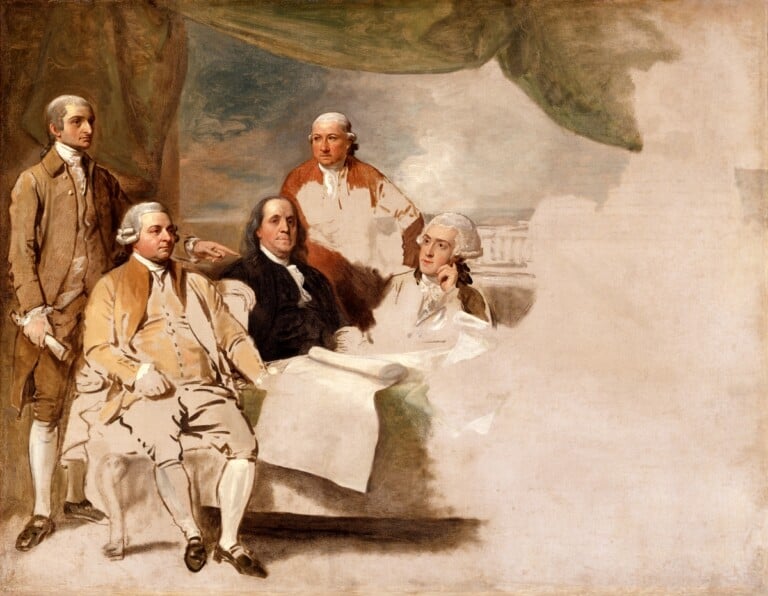The Treaty of Paris (February 10th, 1763) recognized America as an independent nation. The Americans had to find the institutions to support their system.
The problem was that the Government was weak and America was not respected internationally. Americans were still afraid.
Therefore, the Americans changed the Articles of Confederation and organized a meeting in Philadelphia.
In 1787, the Philadelphia Constitutional Convention took place. George Washington led the discussion with 55 other people. They worked out a completely new system of government: a federal government (power to rule shared) based on a Constitution.
The Supreme Court was created to interpret the laws and the Constitution. It is the basis of the system: the balance of power between the branches of the federal government. Soon appeared a conflict about federalism: many people feared the Government would be too strong compared to the States.
It was then decided that the Constitution should be approved by the people (and by at least 9 out of 13 states). In 1788, the state of New Hampshire was the 9th to accept.
In March 1789, everything was working fine. In 1791, 10 amendments were added and were known as the Bill of Rights, which granted:
- freedom of religion,
- free press,
- right to bear arms,
- fair trial,
- protection against “cruel and unusual punishment”
In 1801, John Adams, succeeding Georges Washington, appointed a new head of the Supreme Court: John Marshall, who was to be Chief Justice for 35 years.
The Supreme Court had the power to decide whether particular American laws were constitutional according to the Constitution: the “power of judicial review”.
Marshall established the most important basic idea in American constitutional law: the Supreme Court is the final authority in deciding the meaning of the Constitution, which is a huge power.
The first political parties emerged from the conflict between the federalists and the anti-federalists: people needed a strong central authority and wanted their rights secured.
The Federalist Party favoured a strong federal government, appealing to the rich, whereas the Democratic-Republican Party attracted the less wealthy.
Synopsis » From the Puritan settlements to the American Civil War (1787-1877)
- Antebellum South
- Introduction to Puritanism and Expansionism
- Life in the Plantations
- USA: North and South
- O’Sullivan’s Manifest Destiny
- The social context of America in the early 19th century
- The American Civil War: 1861-1865
- America: The New Nation
- After the American Civil War: The Reconstruction
- America: West to the Pacific
- Years of Growth

